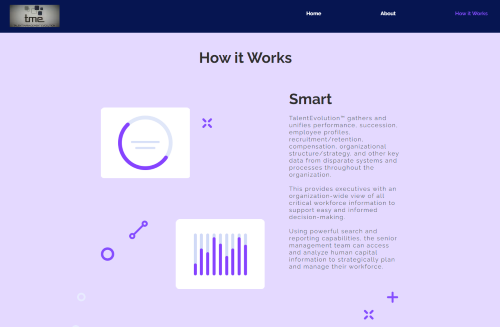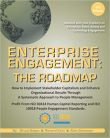ESOP Expert: Employee Ownership Is a Capitalist Tool
Talk about employee ownership, and some think socialism. Anything but, says Darwin Hanson, an expert in compensation and employee stock ownership plans.
Ask Darwin Hanson for the definition of an Employee Stock Ownership Plan, and the answer has nothing to do with starry-eyed social motives. An ESOP is a “retirement and tax strategy for both the employer and the employee. It can also be a very good businesses strategy because employee-owned companies generally outperform traditional companies.”
.png) Darwin Hanson is CEO of Talent Management Evolution, a Brainerd, MN-based talent management software and compensation company, and an expert in ESOPs.
Darwin Hanson is CEO of Talent Management Evolution, a Brainerd, MN-based talent management software and compensation company, and an expert in ESOPs. From the employee’s point of view, the fundamental distinguishing factor between an ESOP and an Employee Stock Purchase Plan (ESPP) is that employees do not purchase the shares. They do not have to do anything but remain on the job for the time necessary to vest in their shares, which are generally allocated as a percentage of an employee’s salary to the total payroll. Some organizations include tenure in the calculation for recognition of longevity.
The Criteria for Success
 An ESOP has many advantages for owners, Hanson says, but it’s not for everyone. It is designed for owners who wish to both motivate employees as well as establish an exit strategy at a fair market valuation. This can be accomplished over time or quickly and the current owners can relinquish control or design the plan that allows them to remain in control for as long as they would like. One critical factor in determining whether to create an ESOP is the owner’s conviction that the company’s current management and employees can and will continue to successfully run the company, even if the current owner is no longer an active member of the management team.
An ESOP has many advantages for owners, Hanson says, but it’s not for everyone. It is designed for owners who wish to both motivate employees as well as establish an exit strategy at a fair market valuation. This can be accomplished over time or quickly and the current owners can relinquish control or design the plan that allows them to remain in control for as long as they would like. One critical factor in determining whether to create an ESOP is the owner’s conviction that the company’s current management and employees can and will continue to successfully run the company, even if the current owner is no longer an active member of the management team.Under an ESOP, owners can sell any desired percentage of the company at any time to employees, with their shares paid for out of cash flow based on a third-party company valuation, he explains. The owner pays no tax on the sale provided the money is reinvested in some other form of equity or qualified investment within one year, so that the tax on the sale is deferred until a liquidity event. Under ordinary circumstances, long-term capital gains are taxable at a rate of up to 20% under current tax law, depending on the amount.
Hanson says ESOPs are for established companies run by owners as a strategy to optimize the engagement of employees while looking for a dependable, tax-friendly exit strategy. ESOPs generally are for owners who either do not wish to pursue or do not have a company suitable for a public offering or who wish to have a liquidity event without giving up control to a private equity or other firm.
ESOPs generally are not for startups, he emphasizes, because setting up and running an ESOP is cost prohibitive if there is under 20 employees and profits under $1 million per year. The company must have the cash on hand to pay vested employees who resign without depriving the company of necessary cash flow, and should not be in a position in which employee payouts undermine the company’s ability to effectively compete. In addition, setting up an ESOP can cost $75,000 or more in legal and accounting fees and at least $25,000 per year to administer it.
In a leveraged ESOP, the company can borrow the money and then lend it to the ESOP in order to pay the owner(s) for the sale of their stock at the then fair market value. The owner can receive all or a portion of their share value from the ESOP. The company then pays the maintenance on the loan out of cash flow. Another non-cash option enables owners to simply grant new stock to employees without any immediate cash outlay by the company, which does however dilute their ownership percentage.
Considerable Flexibility Provided
ESOP plans afford owners considerable flexibility within certain restrictions. Employees must be able to vest in their shares within six years (three years if cliff vesting is used), which means that when they leave, they can cash out at fair market value. This allows the owner to establish a vesting schedule that encourages employee retention. In addition, the owner(s) can take as long as they like to cash out and are not prohibited from changing their mind and selling their remaining shares. ESOP participants, however, who want to cash out must give the ESOP the right of first refusal to their shares. Employees do not have direct voting rights. A management committee is set up to direct the rights of the ESOP participants, including voting rights. The owner can appoint the management committee composed of hand-chosen members along with at least one employee representative, so the owner can choose to retain control. That said, Hanson emphasizes that the best-run ESOPs involve employees in key management decisions, “because that’s the entire point of an ESOP: to have employees actively involved in the welfare of the organization.”
He explains, “When ESOPs are properly run, employees feel a higher level of pride in the organization and have a clearer connection between what they do for the company and its success. This leads to higher productivity and quality, and a greater willingness to refer others to the company, confirmed by multiple research studies.”
For More Information
Darwin Hanson, CEO
Talent Management Evolution
Click here to get ESM news delivered each week.
Master the “S” of Environmental, Social, Governance (ESG), A.k.a. Stakeholder Capitalism
The Enterprise Engagement Alliance at TheEEA.org is the world’s first and only organization that focuses on outreach, certification and training, and advisory services to help organizations achieve their goals by fostering the proactive involvement of all stakeholders. This includes customers, employees, distribution and supply chain partners, and communities, or anyone connected to an organization’s success.
Training and Thought Leadership
- Founded in 2008, the Enterprise Engagement Alliance provides outreach, learning and certification in Enterprise Engagement, an implementation process for the “S” or Social of Stakeholder Capitalism and Human Capital Management and measurement of engagement across the organization.
- The Enterprise Engagement Alliance provides a training and certification program for business leaders, practitioners, and solution providers, as well as executive briefings and human capital gap analyses for senior leaders.
- The EEA produces an education program for CFOs for the CFO.University training program on Human Capital Management.
- Join the EEA to become a leader in the implementation of the “S” of ESG and Stakeholder Capitalism.
- The ESM information portal and The Enterprise Engagement Advisors Network solution provider marketplace cover all aspects of stakeholder engagement, and the EEA information library lists dozens of resources.
- The RRN information portal and Brand Media Coalition marketplace address the use of brands for gifting, incentives, recognition, and promotions. The BMC information library provides information and research resources.
Video Learning
The EEA Human Capital Management and ROI of Engagement YouTube channel features a growing library of 30- to 60-minute panel discussions with leading experts in all areas of engagement and total rewards.
- Enterprise Engagement for CEOs: The Little Blue Book for People-Centric Capitalists. A quick guide for CEOs.
- Enterprise Engagement: The Roadmap 5th Edition implementation guide. A comprehensive textbook for practitioners, academics, and students.
Enterprise Engagement Advisory Services
The Engagement Agency helps:
- Organizations of all types develop strategic Stakeholder Capitalism and Enterprise Engagement processes and human capital management and reporting strategies; conduct human capital gap analyses; design and implement strategic human capital management and reporting plans that address DEI (Diversity, Equity, and Inclusion), and assist with managed outsourcing of engagement products and services.
- Human resources, sales and marketing solution providers profit from the emerging discipline of human capital management and ROI of engagement through training and marketing services.
- Investors make sense of human capital reporting by public companies.
- Buyers and sellers of companies in the engagement space or business owners or buyers who seek to account for human capital in their mergers and acquistions.
For more information: Contact Bruce Bolger at Bolger@TheICEE.org or call 914-591-7600, ext. 230.















